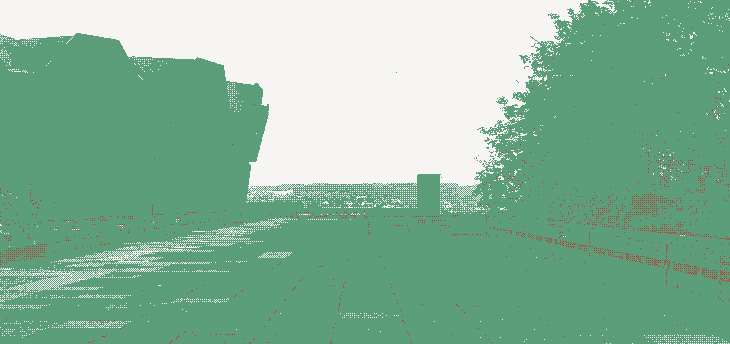
Helena Cermeño
Max Langner
Mobility and communication infrastructures are central to how regions live through structural transformation. In Lusatia, Germany’s most lignite-dependent region, the end of coal brings not only economic and social challenges but also urgent questions about how transport and digital infrastructures can support new forms of regional life. Without sufficient infrastructures, risks such as mobility poverty and digital divides may deepen, while successful reconfiguration can open pathways for economic diversification, social cohesion, and sustainable futures. This case invites participants to think through Lusatia—and other lignite-mining areas in Germany—as pilot sites of coal-exit or post-coal transformation, and to do so from the Ruhr Valley, another region shaped by coal’s legacy and its infrastructures. Although Lusatia’s dispersed, small-town structure differs markedly from the Ruhr’s dense metropolitan polycentricity, the Ruhr still offers experience-based lessons from decades of hard coal decline. These include the risks of fragmented transport planning across municipalities, the uneven rollout of digital infrastructures, and the challenge and potential of re-branding infrastructures as future-oriented. By studying these experiences, Lusatia can anticipate similar governance and perception issues, even if the spatial and demographic conditions differ.
Together, we will ask
- (1) Structural factors: What conditions and disparities in mobility and digital infrastructures shape everyday life in transitioning regions like Lusatia and other lignite-mining areas in Germany?
- (2) Transformation requirements: What kinds of infrastructural changes (e.g., expansion, conversion, dismantling) become necessary in coal-exit-driven transitions?
- (3) Action requirements: What challenges and opportunities emerge for planners, municipalities, and regional actors and how can policy agendas support them?
The case explicitly aims to bring together practitioners and researchers working on the Ruhr Valley, Lusatia and beyond creating a space for inter-regional comparison, networking, and mutual learning.
Our common goal and intended outcome
In a one-day collaborative analysis, participants will work across STS and practice to identify what mobility and digital infrastructures do in transformation processes, how to conceptualize their role in just and sustainable transitions, and what lessons can travel between the Ruhr, Lusatia and other (post-)coal regions.
The aim is to leave participants with concrete questions, tools, and connections they can build on in their own work.
By the end of the day, participants will have collectively produced:
- a shared set of guiding questions and principles for addressing mobility and digital infrastructures in coal-exist/post-coal transformations, and
- new connections between practice actors and researchers across the three lignite regions.
Depending on participant interest, the case may serve as a seed for a new interregional network or a shared methodological approach for studying infrastructures in transition.
Structure of the Day
The case will unfold in three flexible, co-creative phases:
1. Opening and Collaborative Mapping
Short inputs introduce the case focus: how mobility and digital communication infrastructures shape everyday life in regions undergoing major transitions. The participatory mapping session invites participants to share their cases and lived experiences, helping surface structural conditions, disparities, and localized challenges. This creates an overview of how infrastructures are distributed, maintained, or strained across different contexts.
2. Creative and Comparative Group Work
In small groups, participants explore examples from the Ruhr, Lusatia and other lignite-mining regions using creative and analytical tools. These activities aim to help us trace how sociotechnical practices, historical legacies, and material constraints shape infrastructural futures. Through comparison, groups will identify which transformations—e.g., expansion, conversion, repurposing, or dismantling—become necessary in coal-exit processes, and how these changes affect everyday mobility and communication practices.
3. Synthesis and Co-Production
The final session gathers insights across cases and methods to draft shared guiding questions and principles. Participants identify areas of alignment, tensions, and unresolved issues related to infrastructural transitions. This synthesis highlights action requirements: challenges for planners and municipalities, opportunities for regional actors, and ways policy frameworks could better support local needs. It also outlines possible next steps such as shared tools, networks, or comparative research agendas.
Character of the Case
A one-day collaborative exploration, designed for co-creation and networking, with the option to continue as a cross-regional infrastructure transformation network after the conference.
Participants:
- Minimum: 10
- Maximum: 25
Open to all disciplinary backgrounds; practitioners especially welcome.
Application Questions
- What is your research or professional experience with mobility, digital infrastructures, or regional transformation in coal-exit/post-coal or structurally changing regions?
- What case, perspective, or practical example would you like to bring to the workshop?
- What do you hope to gain from participating, and what form of collaboration or exchange interests you? We are open to different ways of participation: please explain in the form what you have in mind.
- (Optional) Are you connected to actors or institutions in the Ruhr, Lusatia, the Rhineland, or Central Germany?